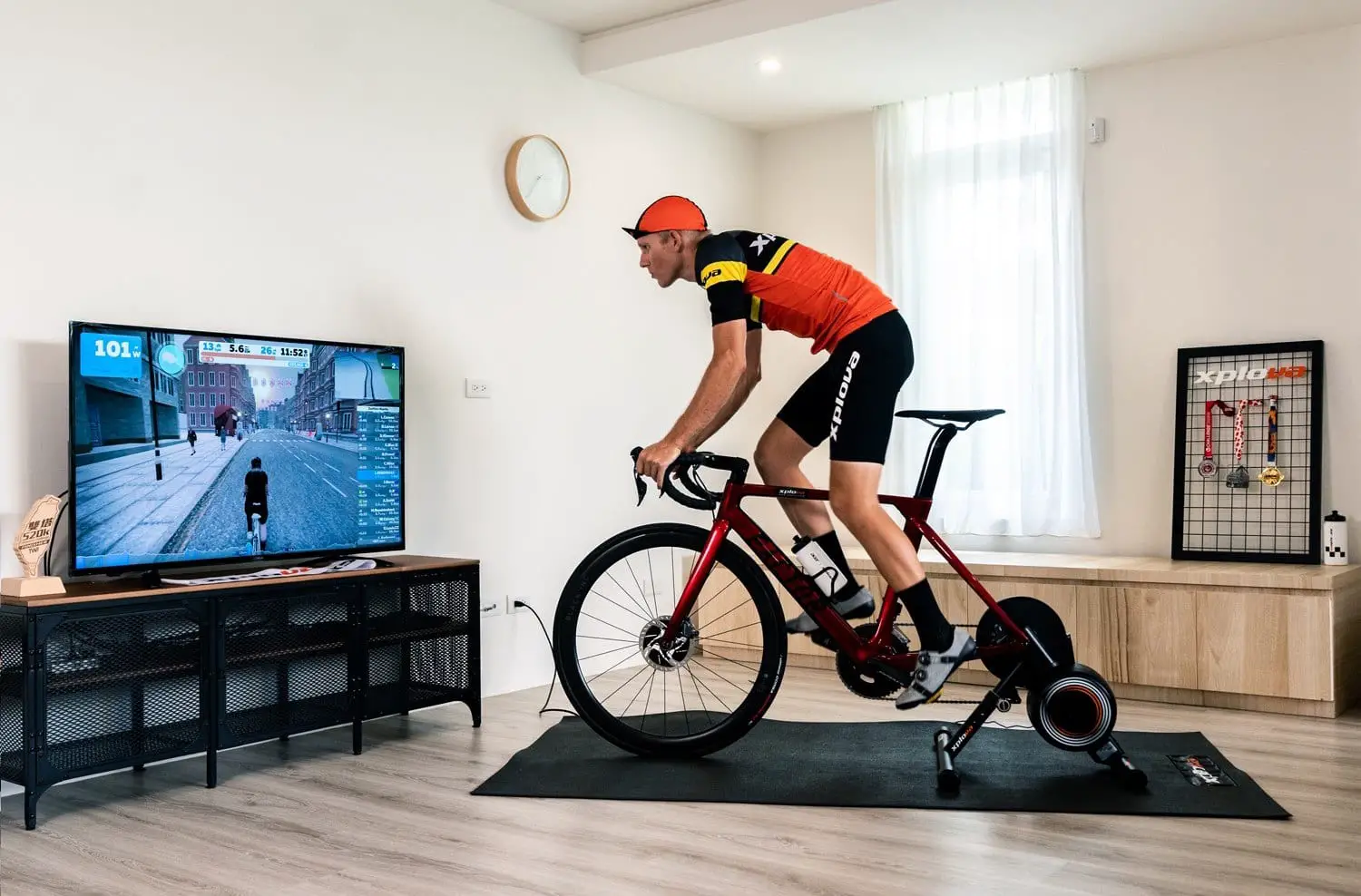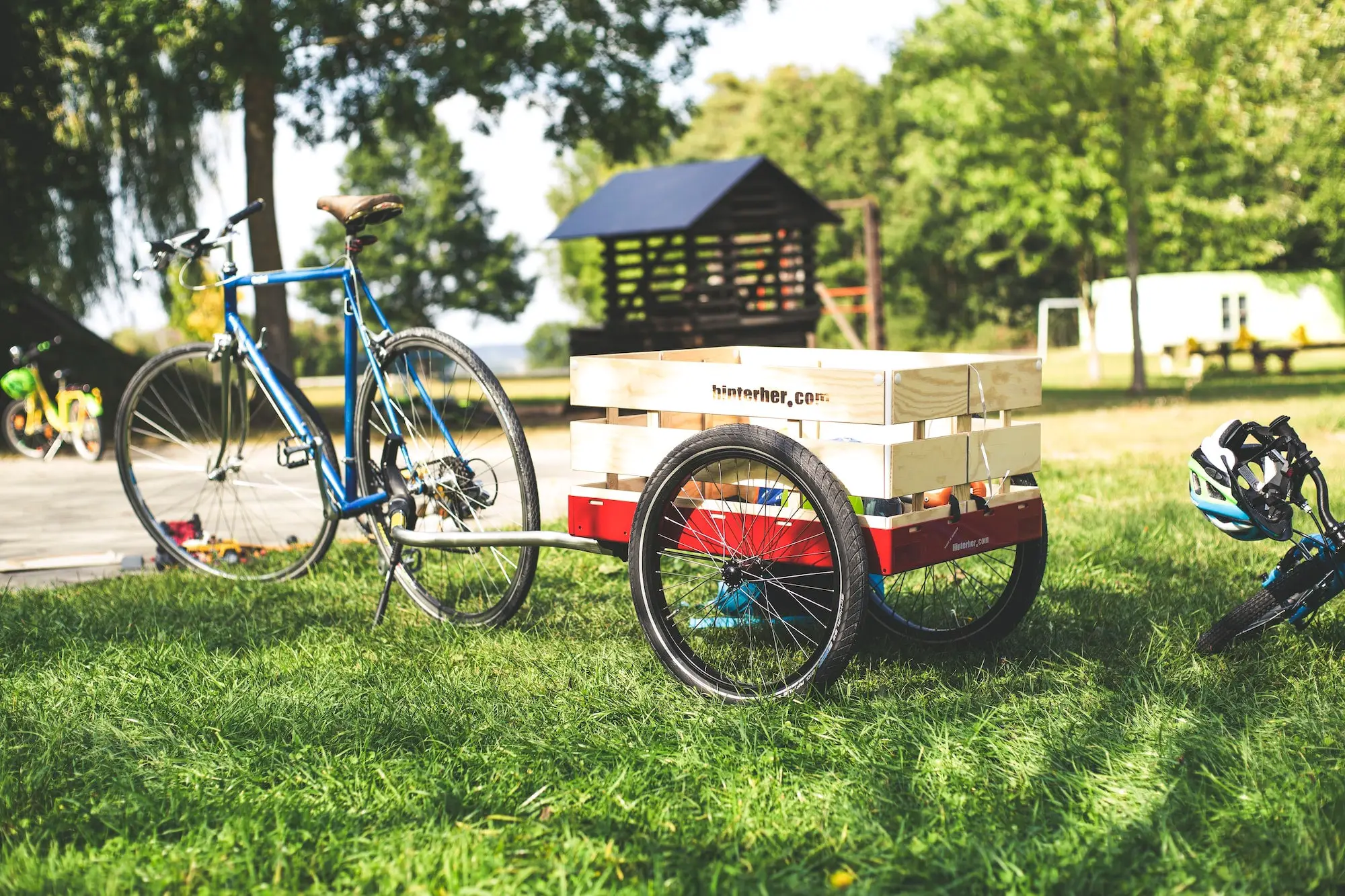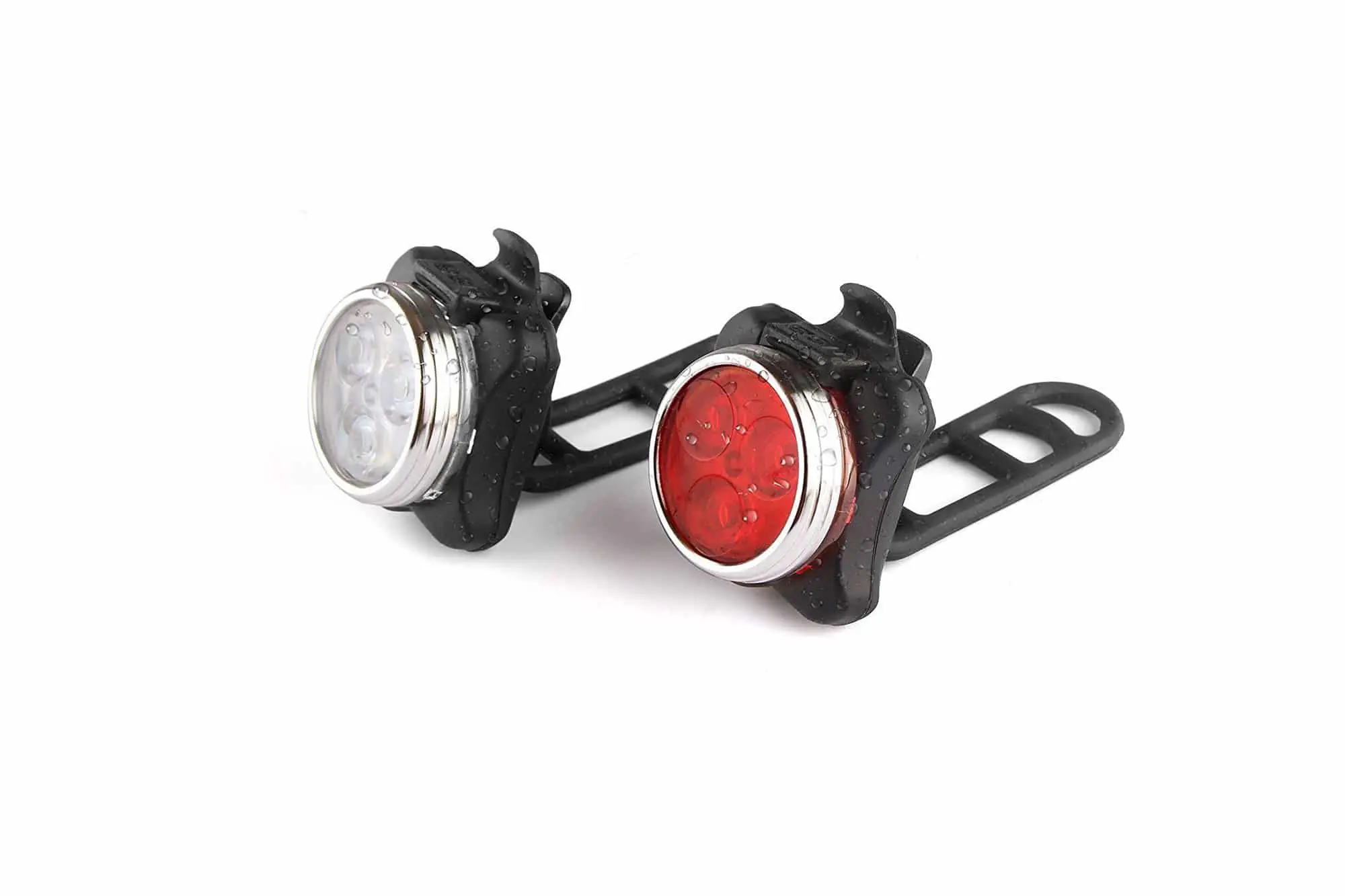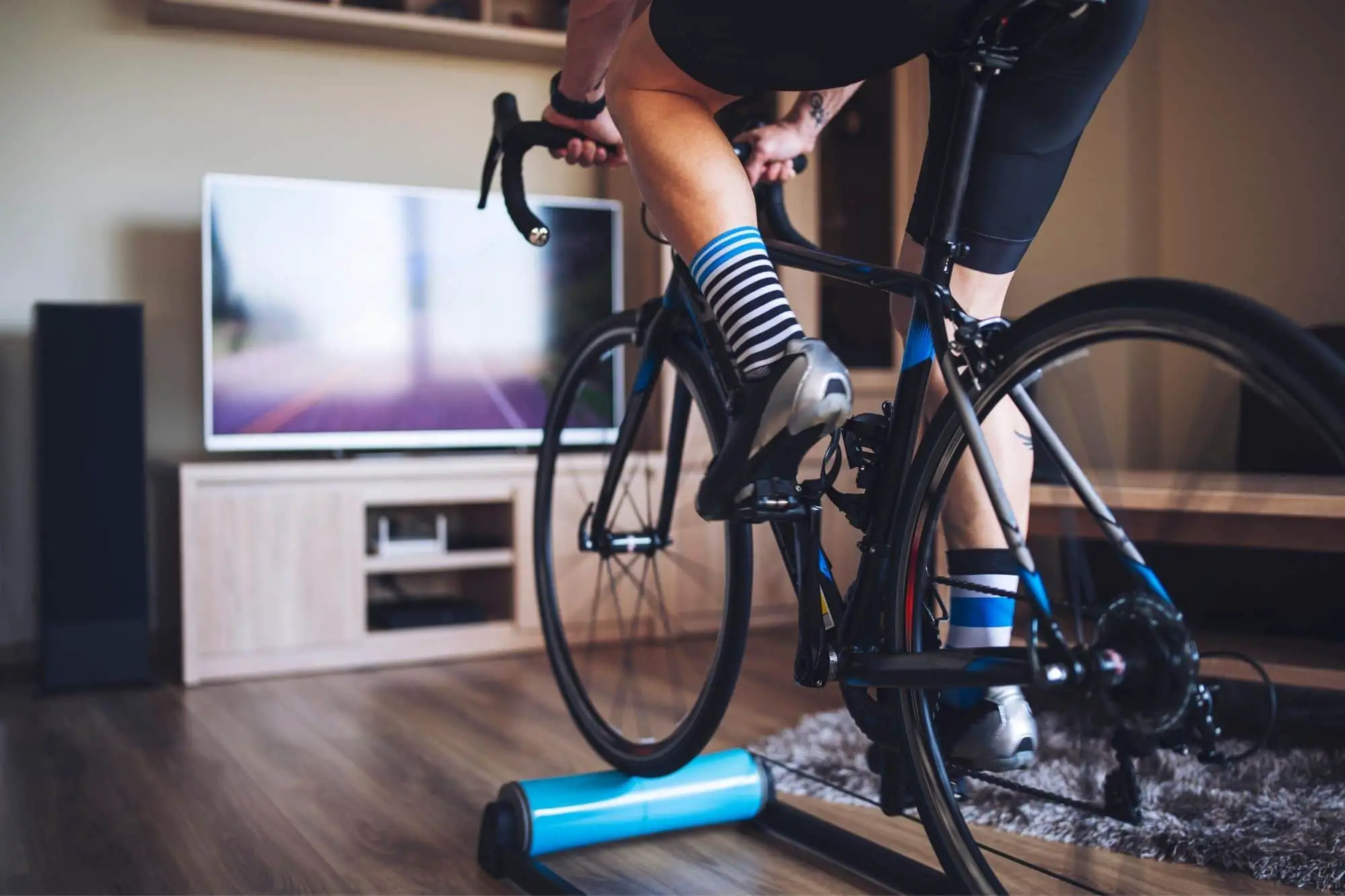Indoor cycling is getting a lot of attention lately. Riding on a bike trainer can be challenging and exhilarating. It’s not just hype. There are actually lots of benefits to indoor biking. We’ll discuss some of the important ones in this article and then towards the end, I’ll show you why you need a bike trainer mat and how to choose one.
The Benefits of Indoor Cycling
Indoor biking is a very challenging but fun activity. If you are a beginner, you can start with casual rides. If you are already an experienced biker, then by no means, go all out. Below are some of the amazing benefits of indoor biking:
It strengthens your heart
Indoor biking is akin to running, swimming, outdoor biking, and other cardio exercises. It helps improve your overall cardiovascular health. In fact, this 2017 study shows that indoor biking is better than biking outdoors when it comes to helping you improve your overall fitness.
It helps you burn calories
Depending on the intensity of your ride, you can burn between 400 to 600 calories in one session. Keep going at this and you’ll see weight loss results in no time.
It develops your muscles
Indoor biking works out all of your body’s major muscle groups:
- Core
- Upper body
- Back
- Glutes
- Quadriceps
- Hamstrings
- Lower legs
The Importance of Using a Bike Trainer Mat
A bike trainer mat is an important indoor cycling accessory that you should get if you are serious about biking indoors. Why? Because bike trainer mats help with:

1. Reducing noise and vibration
Bike trainers, especially cheap ones, are noisy. And your family and neighbors will not like it. Bike trainer mats are designed to help dampen vibrations and reduce noise.
Unlike yoga mats, bike trainer mats are thick and heavy making them more effective. Lighter mats (i.e. yoga mats) don’t have enough material to absorb the noise of your bike trainer and you’ll end up just wasting money if you skimp over a proper bike trainer mat.
Other than keeping your neighbors friendly, reducing the whirring and buzzing sound of your bike trainer can also help you focus on your exercise.
2. Easy cleaning
Unlike yoga mats, bike trainer mats are waterproof. This means that water and sweat will not creep into the mat’s material. The last thing you want is the smell of old sweat lingering in your living room. It’s a huge turn off!
Because bike trainer mats catch sweat and moisture instead of absorbing them, they are easier to clean. Just grab a towel, wipe off the surface and you’re all good! This handy feature speeds up your after workout cleanup so you can move on to your next activity.
3. Protecting your floor
Good flooring is expensive. Whether you own the space or just renting it, it is important to take care of your floor. Bike trainers are heavy. Without a mat to protect your floor, you are most likely to scratch or damage it sooner or later. Bike trainer mats also prevent water, dust, grime, and sweat from reaching your floor. This helps against unsightly stains which can be a nightmare to clean.
4. Keeping you safe
Bike trainer mats provide a grippy and stable surface for you to exercise on — avoiding slippage and other accidents.
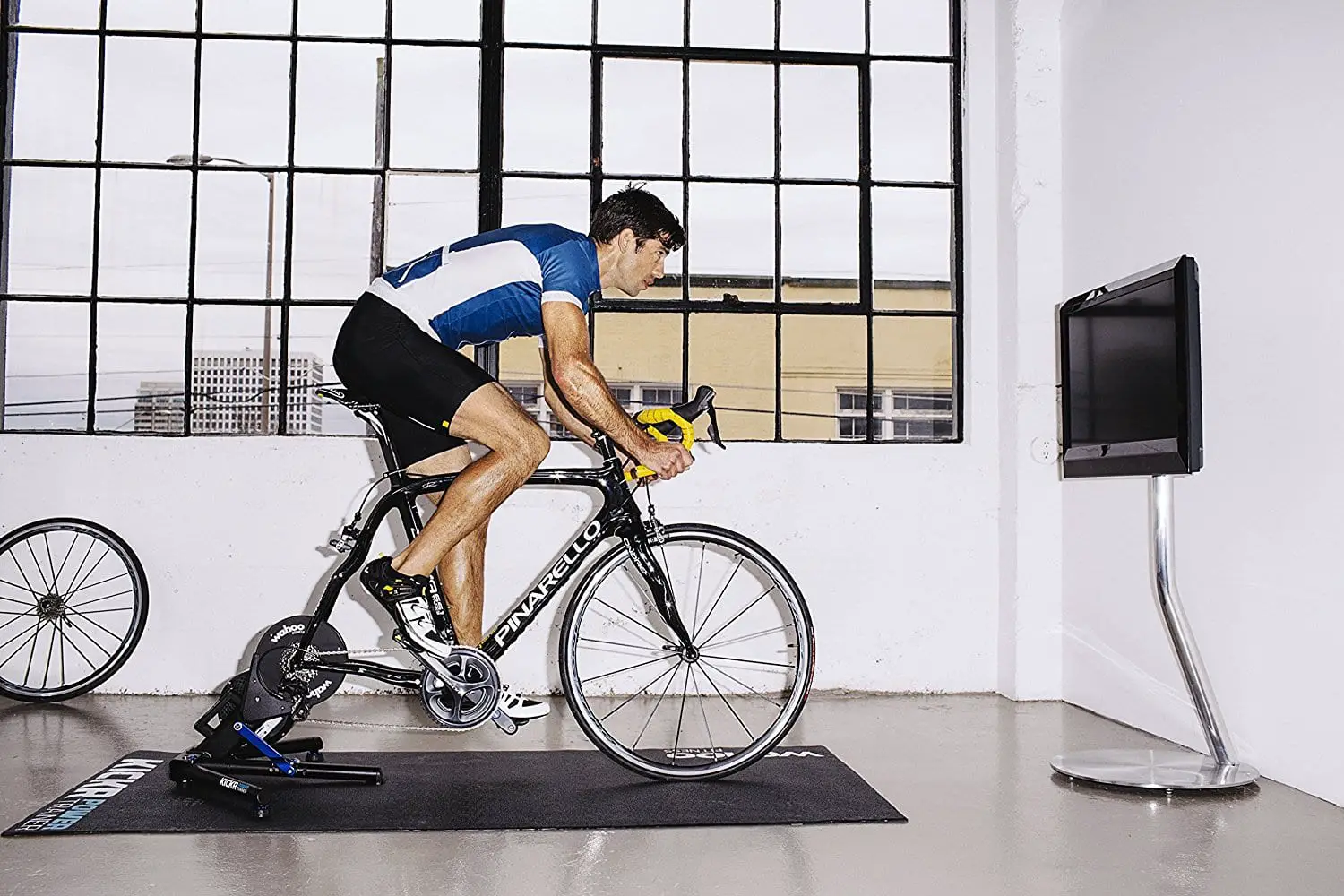
Four Tips on How to Choose a Bike Trainer Mat
Are you now convinced that you need a bike roller mat? Great! Here are some tips on how to choose one that’s perfect for your needs.
Tip #1. Understand the materials
Depending on the manufacturer, bike mats are made from various materials. Below is a quick overview:
| Material | Description |
|---|---|
| Rubber Foam | Bike mats made from rubber are cheap, widely available, and easy to clean.
Rubber bike mats also tend to last longer than ones made from PVC. Because rubber is squishy, rubber bike trainer mats are ideal for small riders. |
| PVC | Bike trainer mats made from PVC are strong. They are also water and tear-resistant. PVC is heavy and grippy — providing you a stable and safe area to ride on. |
| Vinyl Composite | This material is probably the toughest of the three. Usually used as a floor covering for oil field workers, there’s no chance you’ll slip on bike trainer mats made from this material. |
Tip #2. The thicker, the better
Thick bike trainer mats offer the best floor protection and noise reduction. The only downside to this is the weight. Compared to thin bike mats, thick ones don’t fold easily and can be quite a problem to store.
Thin bike trainer mats, on the other hand, are light and easy to store or transport. The major downside is that they don’t last as long as their thicker counterparts.
Tip #3. Pick ones that are easy to clean
Most bike trainer mats are made from water-proof materials that you can easily wipe down or vacuum. However, there are some that come with crevices and other textures that may catch bits of dirt and grime. The easier it is to clean your bike mat, the faster you can relax or do your next activity.
Tip #4. Get the right size
Many bike trainer mats in the market are designed to contain a bike trainer — which is its main purpose. Sadly, most of them are not wide enough for anything else.
Indoor bikers who have limited floor spaces will be contented with this. There are also some who tend to invest on an extra mat to cover more floor. The bottom line here is that make sure you the mat you are picking is wide enough for what you need.
Where to Buy the Best Bike Trainer Mat?
Here’s a link to our Best Bike Trainer Mats buying guide. We’ve compiled the best indoor cycling mats that we can find so you spend less time shopping and more time riding!
Happy biking!


